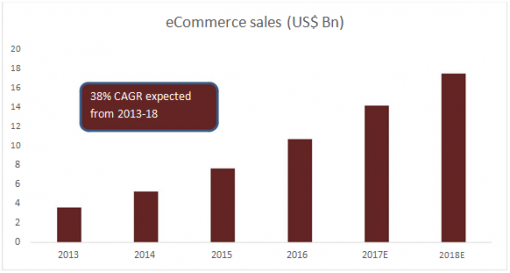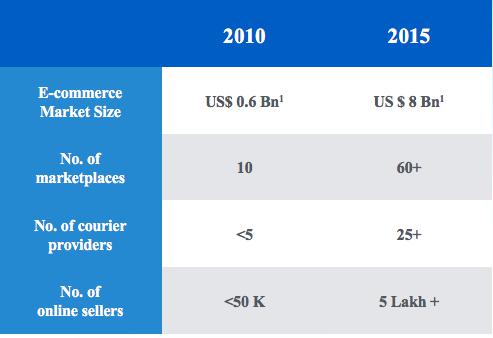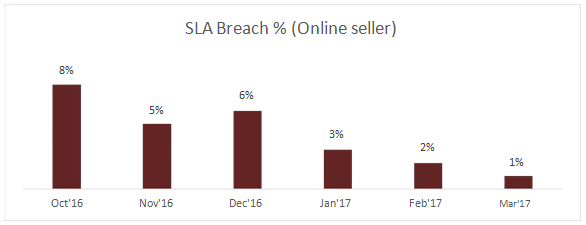The E-commerce boom
Indian e-commerce market saw a huge boost in 2014-15, due to aggressive marketing by marketplaces (both Indian and global) and a lot of venture capital funds available in the market, as Indian eCommerce market held a huge potential (large smartphone penetration, younger demographics) and was expected to hit US$ 100 Bn by 2020.
This presented a huge opportunity for merchants across categories, primarily due to:
- Ease of access to pan India customer base, which was otherwise not accessible
- Unparalleled sales growth, due to aggressive marketing campaigns were done by marketplaces
Gradually, merchants saw the relative share of sales from online channels growing, which attracted many traditional businessmen and new age entrepreneurs to explore the “e-commerce boom”

Challenges faced by Online Sellers
While the growth presented a lot of opportunities, but it also increased complexities for the sellers in terms of managing multiple marketplaces, multiple courier partners, ratings on marketplaces, prices on marketplaces, cataloging, listing etc. and the list is never-ending.


While it is a difficult time for the sellers, in general, but this is also a time which would ensure “survival of the fittest”. It is all the more important for the sellers to streamline their processes, invest in the right tools, keep a “razor sharp” focus on products that are adding to the bottom line, and churning out loss-making products.
The merchants have to view technology as an enabler to make the processes efficient, improve the sales, rather than treating it just as a replacement of an employee, because those who invest in the right tools now, will be able to survive the difficult times of eCommerce, and will come out shining once the eCommerce boom picks up again

